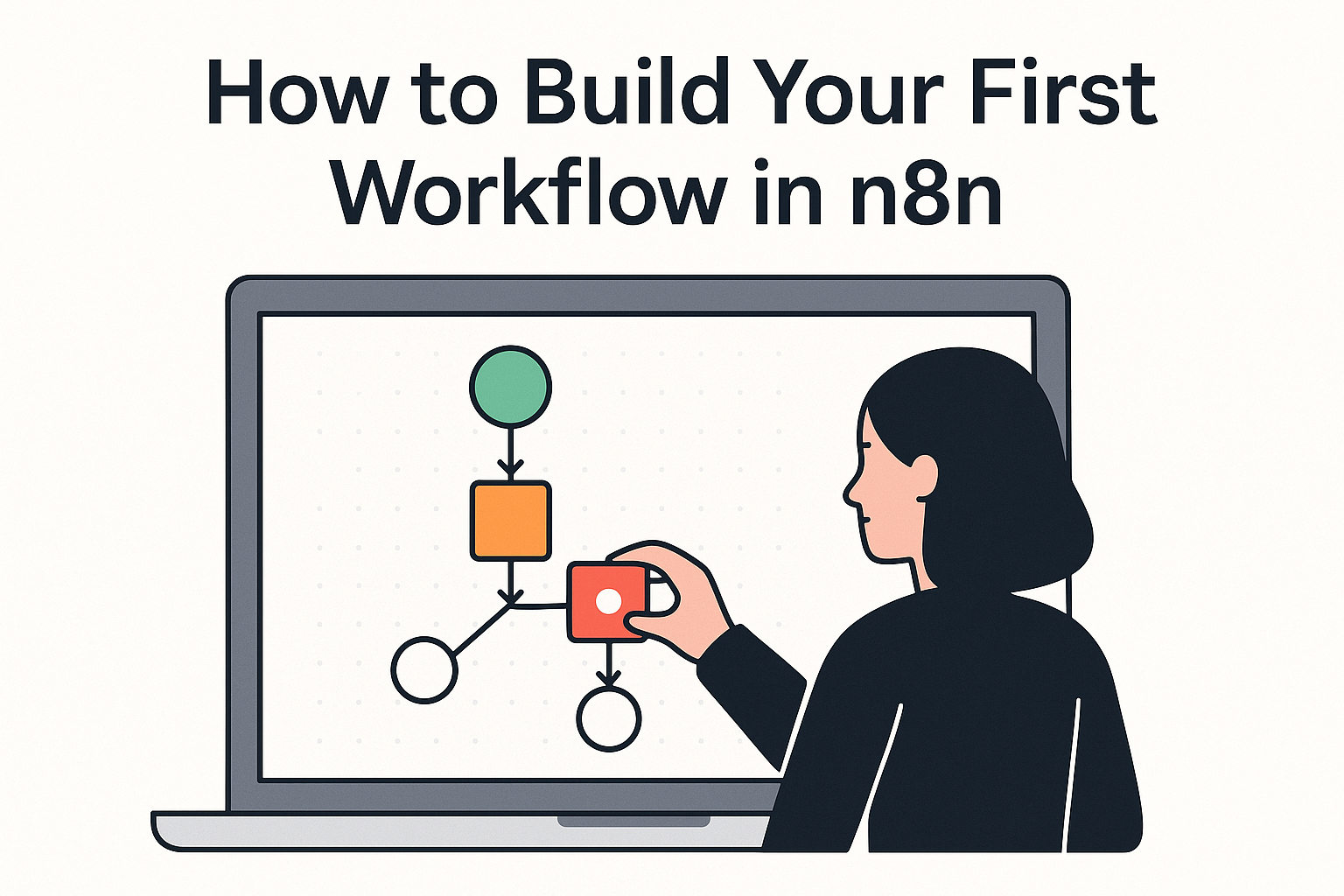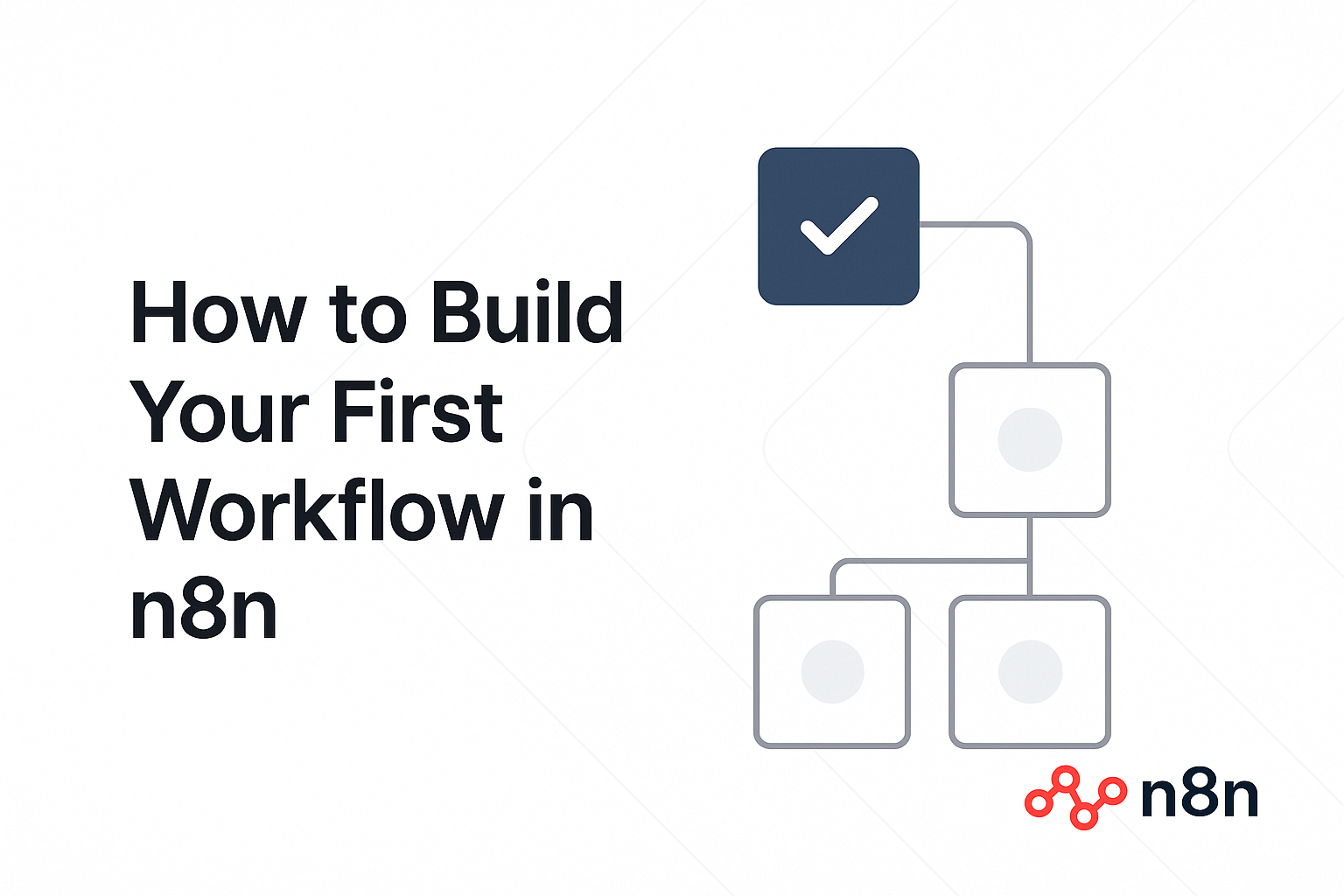Automation can transform your daily tasks from tedious time-sinks into streamlined processes. Enter n8n, a powerful workflow automation platform that connects your favorite apps and services without complex coding. Unlike other tools, n8n offers both cloud-based and self-hosted options, giving you complete control over your data. This guide will walk you through creating your first n8n workflow, from basic setup to execution, helping you automate routine tasks in minutes.
Understanding Workflows in n8n
Before diving into building, let's clarify what makes n8n workflows unique and powerful. Understanding these fundamentals will help you create effective automations from day one.
What is a Workflow?
A workflow in n8n represents an automated process that connects different services and executes actions based on triggers. Think of it as a digital assembly line that moves data between applications and performs tasks without manual intervention.
Workflows consist of connected nodes that process information in a specific sequence. Each workflow starts with a trigger and follows a path you design. The beauty of no-code automation lies in its visual approach – you can see exactly how data flows through your system.
| Workflow Element | Function | Example |
|---|---|---|
| Trigger | Initiates the workflow | New email received, Schedule, Webhook |
| Action | Performs operations on data | Send message, Create record, Transform data |
| Connection | Links nodes together | Data path between Gmail and Slack nodes |
Key Components: Nodes, Triggers, and Data Flow
Nodes form the building blocks of any n8n workflow. Each node represents either a service (like Gmail or Slack) or a function (like splitting data or using conditional logic). The n8n interface offers hundreds of pre-built nodes for popular services.
Workflows always begin with trigger nodes. These special nodes activate your workflow when specific events occur. Common triggers include:
- Scheduled time intervals
- Incoming webhooks
- New data in a database
- Events in connected applications
Data flows from one node to the next through connections you create. Each node processes the incoming data and passes results to subsequent nodes. This chain creates a complete automation sequence that handles everything from data retrieval to final actions.
Setting Up n8n and Creating Your First Workflow
Getting started with n8n requires minimal setup. You can choose between n8n cloud for convenience or self-hosting for complete control over your data.
Signing Up and Workspace Overview
Visit the n8n website and sign up for an account. The platform offers a free tier perfect for beginners. After registration, you'll access your workspace dashboard.
The n8n interface features a clean, intuitive design. The main components include:
- Workflows list: Shows all your created workflows
- Node panel: Contains all available integration nodes
- Canvas: Where you build and connect your workflow
- Execution area: Displays test results and data output
Take a moment to explore the interface. Familiarize yourself with the search function to find specific nodes and the settings panel to manage credentials.
Starting a New Workflow
Click the “Create Workflow” button to begin. This opens a blank canvas where you'll build your automation. First, name your workflow something descriptive that indicates its purpose.
The workflow editor displays a grid where you'll place and connect nodes. The left sidebar contains all available nodes categorized by function or service. You can use the search bar to find specific nodes quickly.
Before adding nodes, consider what you want to accomplish. A clear goal helps you select the right trigger and action nodes. For beginners, start with something simple like sending yourself a notification at a specific time.
Building and Configuring Your Workflow Step-by-Step
Now comes the exciting part – assembling your workflow piece by piece. We'll create a basic workflow that demonstrates key concepts.
Adding a Trigger Node
Every workflow needs a trigger. For your first workflow, let's use the “Schedule” trigger for simplicity. Find it in the nodes panel and drag it onto your canvas.
Click on the Schedule node to configure it. You'll see options for:
- Interval: How often the workflow runs
- Time: Specific execution times
- Weekdays: Which days to run
For testing purposes, set it to run every minute. This allows you to see results quickly. In real-world scenarios, you might choose daily, weekly, or custom intervals.
After configuring the trigger, click “Done” to save your settings. The node now shows a small play button, indicating it's ready to activate.
Connecting and Configuring Additional Nodes
Now add an action node to perform a task when triggered. Let's use the “HTTP Request” node to fetch data from an API. Search for it in the nodes panel and drag it onto your canvas.
Connect the nodes by clicking and dragging from the output (right side) of the Schedule node to the input (left side) of the HTTP Request node. This creates a data path between them.
- Configure the HTTP Request node with these settings:
- Method: GET
- URL: https://jsonplaceholder.typicode.com/posts/1 (a test API endpoint)
- Authentication: None (for this example)
This node will retrieve sample data when triggered. You can add more nodes to process this data further. For example, add a “Set” node to modify the data structure or a “Slack” node to send the results as a message.
Using Expressions and Mapping Data
Data mapping represents a crucial skill in workflow automation. It determines how information passes between nodes and transforms along the way.
When configuring nodes, you'll often see fields with mapping options. Click the gears icon next to any field to open the expression editor. Here you can:
- Reference data from previous nodes using $
- Apply transformations with expressions
- Use conditional logic with if/else statements
For example, in a notification node, you might set the message field to:
`The API returned: {{$json[“title”]}}`
This expression pulls the “title” field from the JSON data returned by our HTTP request. The double curly braces indicate an expression that n8n will evaluate at runtime.
Expressions give your workflows power and flexibility. They range from simple data references to complex transformations using JavaScript-like syntax.
Practical Applications and Running Your Workflow
With your nodes connected and configured, it's time to test your creation and explore practical uses.
Testing and Activating Your Workflow
Before activating your workflow, test it to ensure proper function. Click the “Execute Workflow” button at the bottom of the screen. This runs your workflow once and displays results for each node.

Examine the output at each step. Green checkmarks indicate successful execution. Red error indicators point to configuration issues that need fixing.
If everything looks correct, activate your workflow by toggling the “Active” switch in the top right corner. Now your workflow will run automatically according to your trigger settings.
The workflow execution history shows each run with timestamps and results. This helps you monitor performance and troubleshoot issues. For critical workflows, consider setting up error notifications to alert you of failures.
Common Use Cases
Your first workflow demonstrates basic concepts, but n8n shines with practical applications. Consider these beginner-friendly use cases:
- Social media monitoring: Track mentions and send alerts
- Lead management: Add new form submissions to your CRM
- Content distribution: Post blog updates across multiple platforms
- Data synchronization: Keep information consistent between systems
- Automated reporting: Generate and email regular business reports
Each use case combines different nodes to solve specific problems. As you grow comfortable with basic workflows, explore workflow templates in the n8n community for inspiration.
Troubleshooting and Tips
Even well-designed workflows occasionally encounter issues. Learning to diagnose and fix problems will make you a more effective automation builder.
Common Issues and How to Fix Them
Authentication errors frequently cause workflow failures. If a node shows authentication errors: – Check that your API keys or credentials are correct – Verify that the service account has necessary permissions – Ensure your credentials haven't expired
Data format mismatches occur when nodes expect different structures. Fix these by: – Using the “Set” node to restructure data – Adding JSON parse/stringify nodes for format conversion – Checking the expected input format in node documentation
- Timing problems happen when workflows depend on external services. Address these by:
- Adding delay nodes between critical steps
- Implementing error handling with retry logic
- Setting appropriate timeouts for HTTP requests
When troubleshooting, use the “Debug” option to view detailed execution data. This shows exactly what information passes between nodes, helping identify where things go wrong.
Best Practices for Beginners
Follow these guidelines to build reliable workflows from the start:
- Start simple and expand gradually. Master basic concepts before tackling complex automations.
- Test thoroughly before activation. Run your workflow multiple times with different inputs.
- Document your workflow purpose and configuration. Future-you will appreciate clear notes.
- Use descriptive node names. Rename nodes to indicate their specific function in your workflow.
- Implement error handling for critical paths. Add “If” nodes to create alternate routes when problems occur.
- Back up important workflows regularly. Export workflows as JSON files for safekeeping.
- Monitor active workflows. Check execution history periodically to catch issues early.
Conclusion
Building your first n8n workflow opens the door to powerful automation possibilities. You've learned to connect triggers with actions, map data between nodes, and create functional automations without writing code.
As you grow more comfortable with n8n, explore its advanced features like conditional logic, loops, and custom API integrations. The platform scales from simple personal automations to complex business processes.
Remember that effective automation starts with identifying repetitive tasks in your workflow. Look for processes that follow consistent patterns and require minimal human judgment. These make perfect candidates for your next n8n project.
Join the n8n community to share your creations and learn from others. Automation is a journey of continuous improvement, and each workflow you build enhances your skills for the next challenge.

